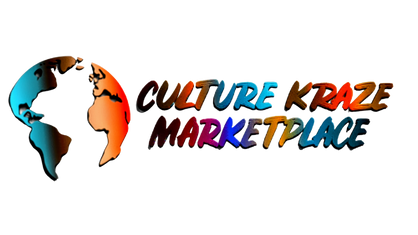Calligraphy: A Meeting of Art and Knowledge in the Muslim World
In the Occidental world, writing has frequently featured in art, but it is uncommon for writing itself to be art. The sharp scratching of a bamboo or reed across the surface of paper is a sound that is seldom heard in the West. But in East Asia and the Islamic world, calligraphy has long been a venerated art form. The shapes of individual letters, viscosity and color of the ink used, and the artist's writing tool of choice all combine to form breathtaking art that is found in the mundane and the extraordinary, the secular and the religious.

Islamic calligraphy wall sticker
Since the earliest days of Islam, the kufic script which likely originated in late 7th century Iraq was used artistically. The script itself likely developed as a variation of the ancient Nabataean script and originally consisted of 17 letters, later expanded with diacritical markings to 28. In these early days, parchment and papyrus were the preferred media for writing, although the paper revolution of the 9th century was not far. Writing as art, however, was never limited merely to paper or parchment, and inscriptions frequently featured on tiles, carpets, vessels, and stone, for religious and secular purposes. The kufic script soon developed into several varieties, including floral, foliated, plaited or interlaced, bordered, and square. The script developed greatly owing to its use in copying the Quran and other official documents, and its widespread use and lack of rules combined to create very different styles in different regions.

The traditional instrument to create Islamic calligraphy is a qalam, usually made out of bamboo or reed. The intensity of the ink varies greatly, allowing the artist a great degree of versatility and letting the letters flow. The advent of paper from China ushered in a revolution in Islamic calligraphy, which was furthered by the Islamic golden age in the Abbasid Caliphate. The qalam came to be seen as a symbol of both, art and knowledge. During this time, the Abbasid capital at Baghdad acquired its famous reputation for being a center of learning, home to the House of Wisdom which featured thousands of books on all subjects, putting most European monasteries of the time to shame. The Muslim world also benefitted greatly from its geographical position, since it encompassed the southern Mediterranean from Spain through North Africa to Turkey and Syria, placing it between Europe and the wider Oriental world, and allowing it to benefit from proximity to both.

In Al-Andalus, several schools of translation were set up, where calligraphers translated Hellenic and Hellenistic works into Arabic, setting the stage for the renaissance centuries later. By this time, in the second millennium AD, a new script, the naskh, had emerged. This new sans-serif script quickly caught on, owing to its easy legibility. The squared kufic script gave way to the more rounded style of naskh, which became particularly in administrative and official documents, including academic works and transcriptions.

Gold dinar from the Umayyad period.
The veneration with which calligraphy and writing were viewed in the Islamic world meant a great deal of systemization and commentary were written regarding the scripts. Notably, Ibn Muqla is credited with standardizing the “six scripts” of Islamic calligraphy, also including thuluth, tawqi’, ruq'ah, muhaqqaq, and reyhan. Although Ibn Muqla was also frequently credited with creating naskh, this was most likely untrue. At any rate, Muqla was an important figure in a tradition that has flourished through three continents over more than a thousand years. As early as 692, the Umayyad Caliphate was minting coinage engraved with calligraphy, especially dinars made of gold.

Although Islamic calligraphy as art had its roots in the Arab world, by the 10th century, Iranians also began to contribute heavily. A famous example in the West is the Shroud of Saint Josse at the Louvre, which showcases the brilliance of Islamic calligraphy and Iranian weaving, and was brought to Europe after the first crusade. Islamic calligraphy has evolved greatly through the ages, particularly as it synthesized with the aesthetic sensibilities of different local populations. In the postcolonial modern world, the huruffiya movement led by Arab artists has combined modern art with traditional calligraphy. Where traditional calligraphy was bound by rules and institutions, hurufi artists have broken free of those restrictions and frequently dealt with abstract themes in their work.

Sadequain Naqqash's work on the roof of Frere Hall in Karachi, Pakistan, is a great example of Hurufi art.
Modern Islamic calligraphy encompasses a dizzying range of styles and themes. While the first generation of new artists devoted their work to developing postcolonial national identities in their homelands, subsequent artists have continually expanded the scope of their work to encompass more and more subjects. The dynamism of new artists from demographically young and curious nations have allowed a large leap in the evolution of an old and venerated art form. For Islamic calligraphy, the future looks bright indeed.
References:
- http://www.themuslimculture.com/islamic-calligraphy-of-quran-verses-and-other-terms/
- https://web.archive.org/web/20110228232705/http://www.mastersofistanbul.com/en/ustalar/2/calligraphy
- https://www.pbase.com/dosseman/calligraphy
- https://www.reed.edu/persian-calligraphy/en/index.html
- https://artsandculture.google.com/exhibit/JwIyX6N5OaEYLA

Leave a comment